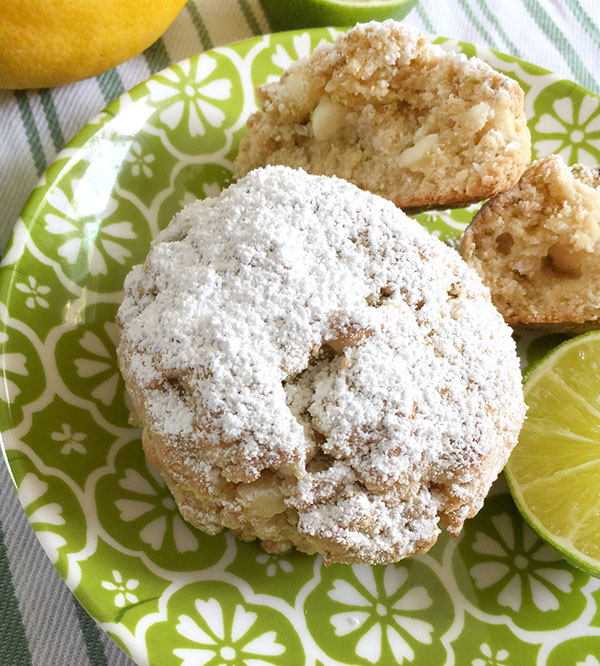
Certain ingredients create certain sensations, like those whose tastes create the illusion of cool, despite not actually being a lower temperature. Powdered (confectioner’s) sugar is one…a fine dusting of this soft sweetness automatically tempers any sort of sweet — even one as strongly warm-flavored as coffee or chocolate or cinnamon — and on the tongue delivers a sense of cool.
Citrus — particularly lime — is another. So it’s no wonder that a particular fine textured cookie, flavored with lime, key lime or a mix of citrus, was named a “cooler.†When I was growing up, these packaged shortbread-like cookies, redolent with a heavy dusting of powdered sugar and deeply lime-infused, melted in your mouth, and I knew of one individual who could polish off a box all on his own.
[H]ere or there today, I still see versions of these cookies in the markets. And recipes for them, too. While I’ll use any excuse to add citrus zest to anything, making a citrus cooler in the form of a cookie sparked the idea to do something else — a Citrus Cooler Scone.
[F]irst, I found a scone recipe that seemed malleable to this venture. Then, I aligned the taste elements I thought would work. I wanted to have coconut in the mix, and since I’ve been wanting to play more with coconut flour in recipes, I decided to add a bit of that, along with some finely flaked unsweetened coconut.
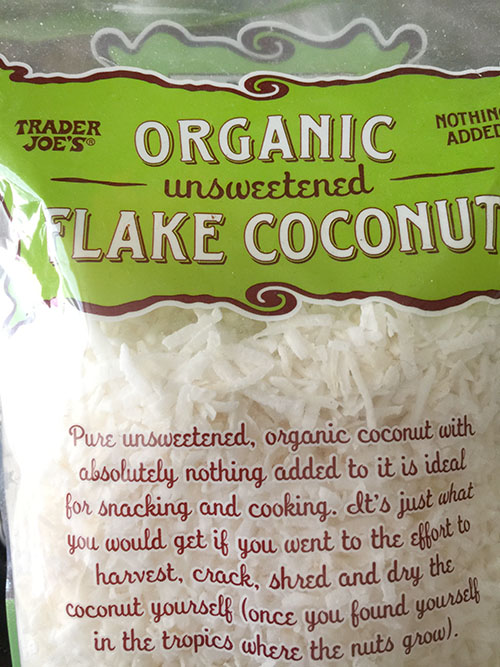
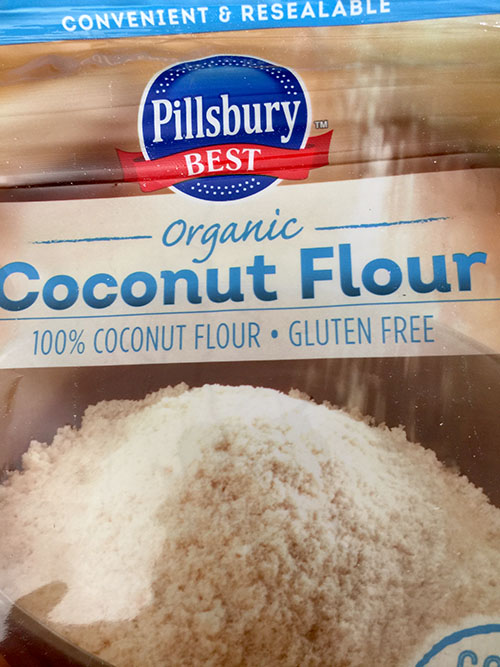
[A]nd of course there would be lime, in the form of zest and juice, but not lime alone. I also wanted to add lemon, so I zested a lemon and used part of that juice as well.
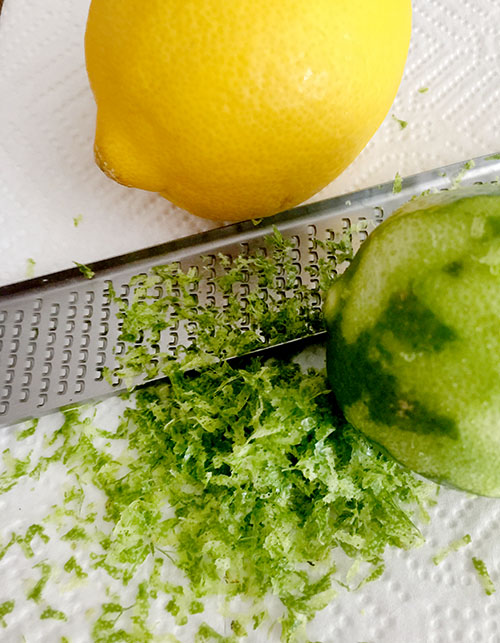
[I] decided to mix the scones entirely in the food processor (but you could mix them by hand as well) — first, the dry ingredients, then the cubes of butter, then the flavoring elements of coconut, citrus zests and a bit of white chocolate (for more cooling sweetness).
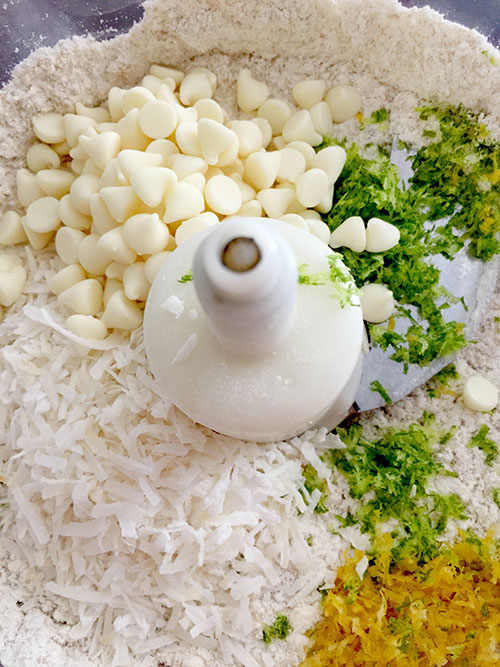
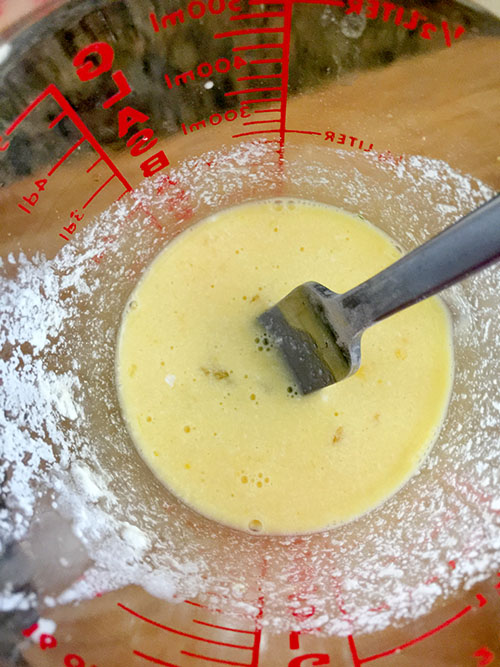
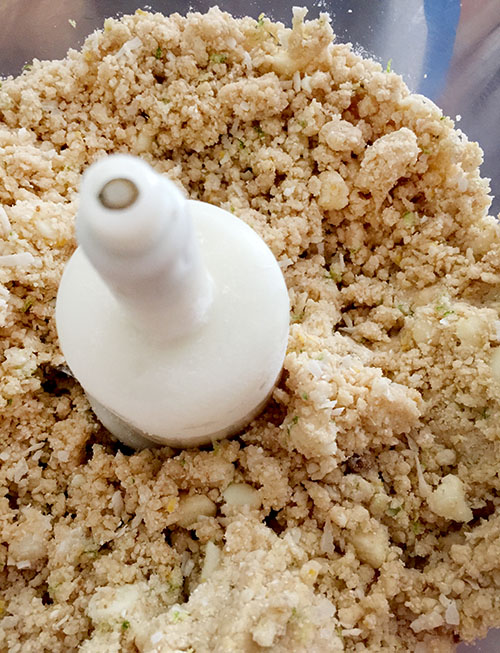
[W]ith a bit of milk, lime and lemon juice, an egg and some vanilla mixed together, then added to the dough, the mixture took on a crumbly, shaggy texture, similar to pie dough.
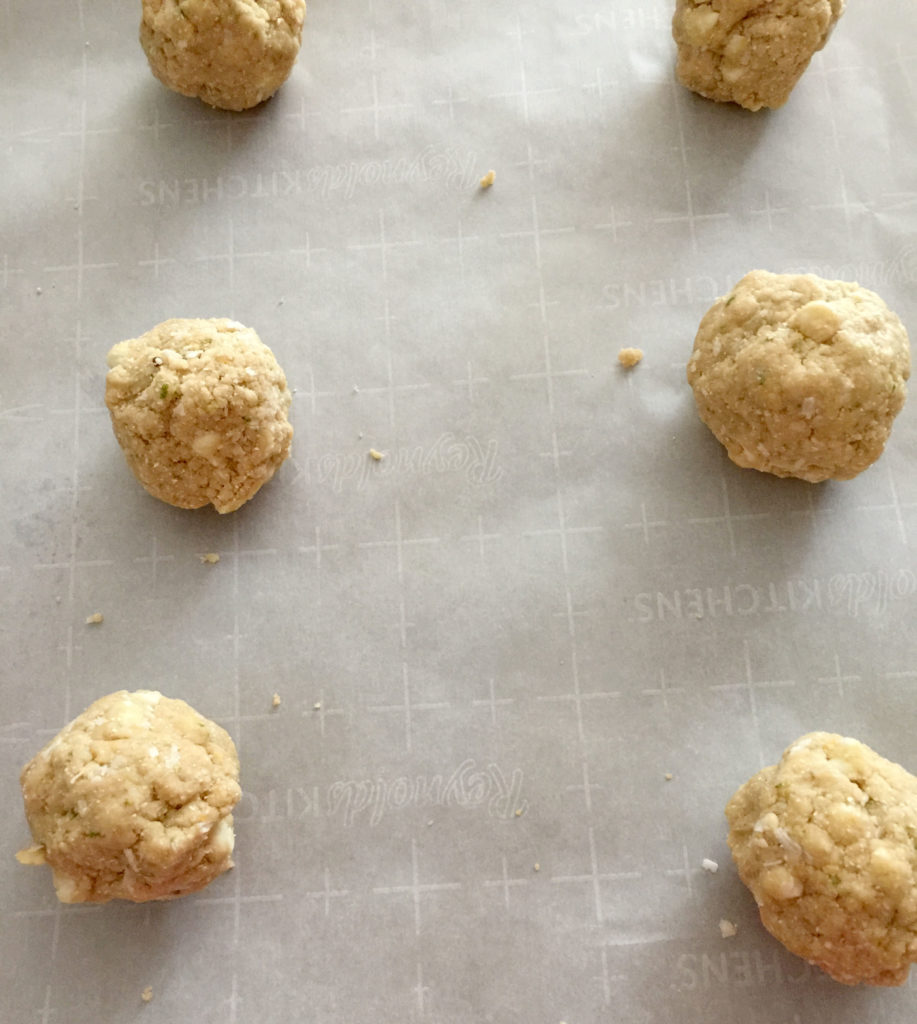
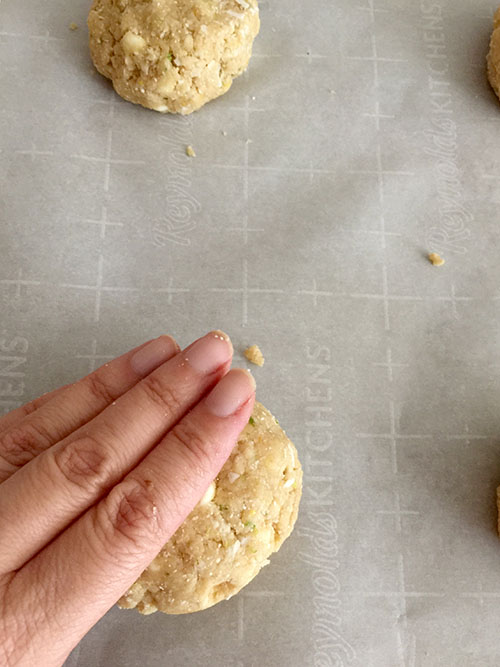
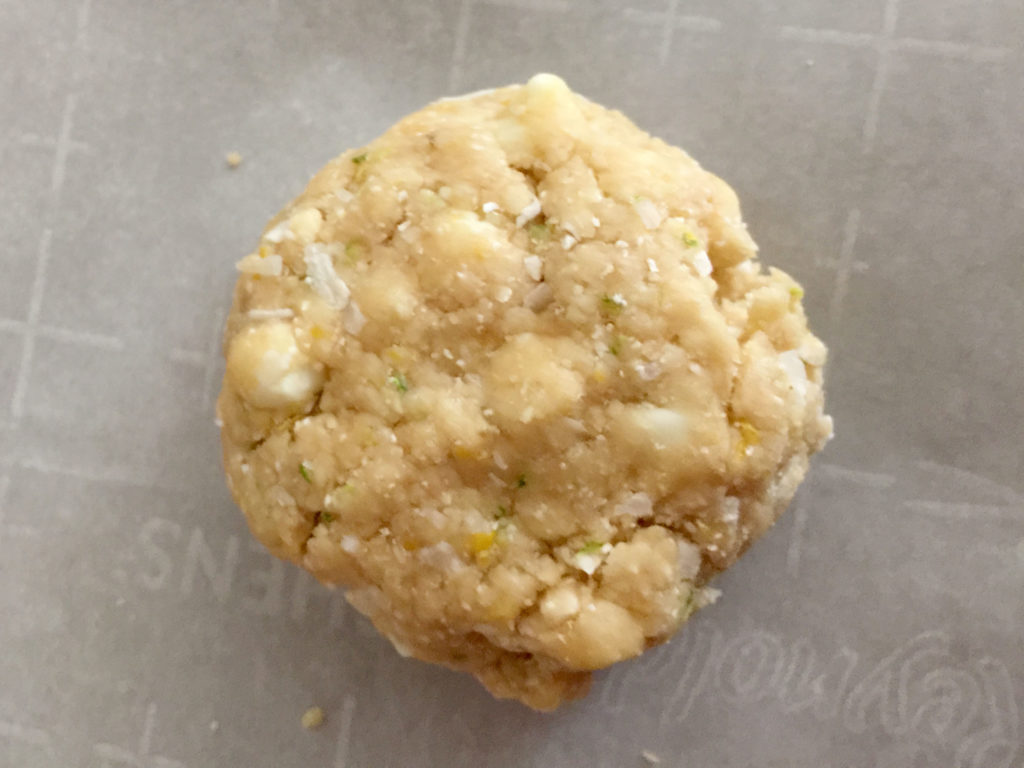
[T]he dough was moist enough to pull together in a new way of forming the scones that I had not tried before — first shaping them into balls (about 1/3 cup of dough for each), then flattening each ball on top after placing it on a baking sheet. It did take on the appearance of a rustically round scone — or an enlarged cookie (whatever your preference).
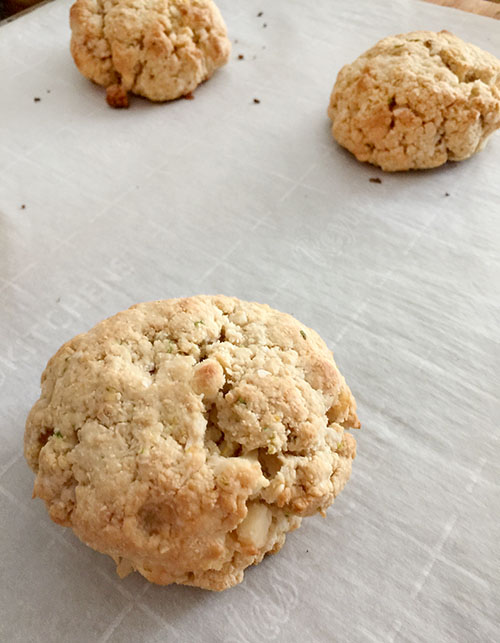
[T]he scones baked up nicely, perfuming the kitchen with coconut and citrus. I resisted the urge to bite into one warm, and also decided not to roll them in powdered sugar before cooling, ala Mexican wedding cookie, to give them a thick dusting of the stuff. For scones, I thought, a lighter sprinkling of the confectioner’s sugar made more sense.
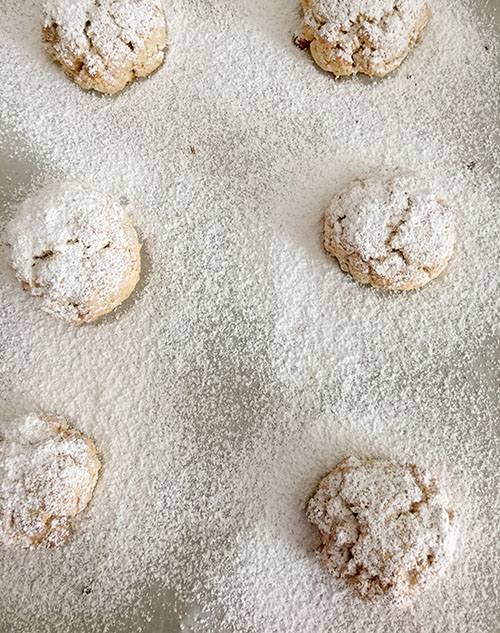
[A]fter the scones had cooled, I sieved some powdered sugar over them, giving them just enough of a snowy top to coat.
While not the meltaway texture of a cooler cookie, these scones were tender, just slightly chewy from the coconut and not too sweet, even with the powdered sugar. The citrus teamed up nicely with the coconut and the bits of white chocolate added just a nugget here or there of vanilla to balance out the flavors.
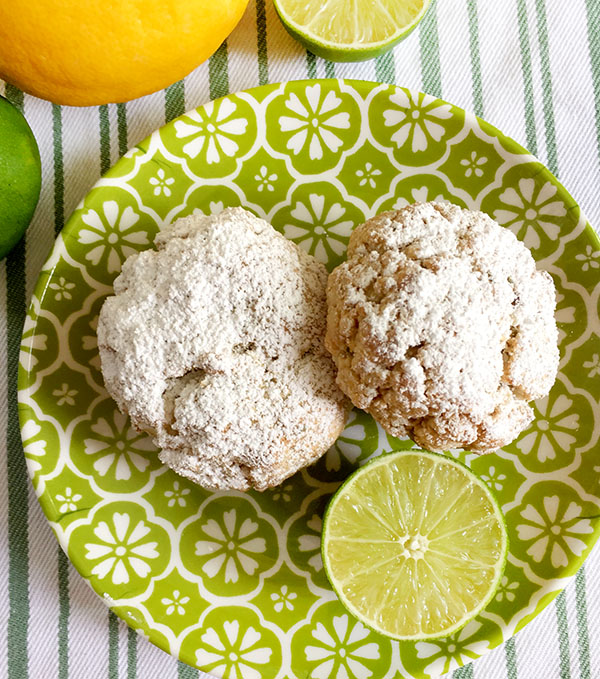
[A] citrus-infused cookie with the ability to cool will always be a favorite. A scone? Maybe even cooler.
Citrus Cooler Scones
Makes 6 scones
- 1 1/4 all-purpose flour
- 1/4 cup coconut flour
- 1/3 cup light brown sugar
- 1 1/2 teaspoons baking powder
- 1/4 teaspoon salt
- 1/4 cup cold, unsalted butter, cut into cubes
- Zest of one lime
- Zest of one lemon
- 1/3 cup fine flaked unsweetened coconut
- 1/2 cup chopped white chocolate (or chips)
- 2 tablespoons lime or lemon juice (or a combination)
- 1/4 cup milk
- 1 egg
- 1 teaspoon vanilla extract
- Confectioner’s sugar for topping
Heat oven to 375. Combine flours, sugar, baking powder and salt in the food processor. Pulse to blend. Add butter and pulse several times until the mixture resembles coarse crumbs.
Add zest, coconut and chocolate and pulse a few times to combine. Whisk citrus juice, milk, egg and vanilla in a measuring cup with a fork. Slowly add to flour mixture by pouring through the feeding tube of the food processor and pulsing until the mixture just forms a crumbly dough.
Form dough into six balls (about 1/3 cup each). Place balls on a large parchment-lined baking sheet. Flatten each ball slightly on top with your fingers, so each scone is about 2-1/2 inches wide.
Bake scones for 18 to 20 minutes or until light golden brown. Place on a wire rack to cool. Dust with powdered sugar using a sieve or sifter.